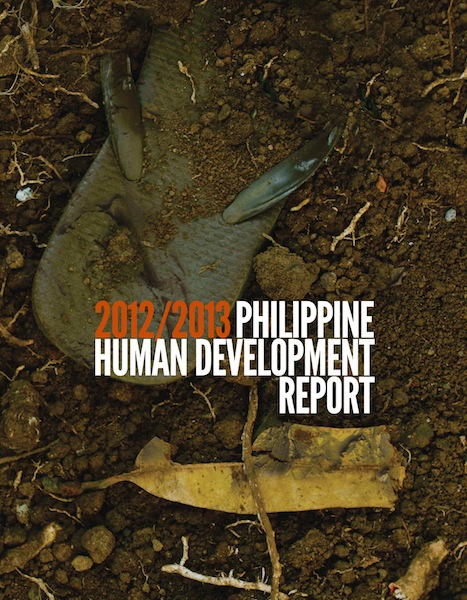By LALA ORDENES
WITH Janet Lim-Napoles and the P10 billion “pork barrel” scam hogging the headlines, here’s a thought:
In an ideal world where the pork barrel is spent on the projects it is originally allocated for and no government official is corrupt, will the pork barrel be a successful tool in improving the standard of living in the country?
The answer is no, according to the latest Philippine Human Development Report (PHDR). The reason: the Priority Development Assistance Fund (PDAF) and other pork barrel-like allocations divide and distribute the resources across the board without taking into consideration the specific needs of a particular area.
And this is wrong because the needs of local government units (LGUs) are determined by its geography, University of the Philippines’ Economics professors Emmanuel de Dios and Toby Melissa Monsod told journalists Thursday. De Dios and Monsod are among those behind the report launched last month.
The PHDR said the physical space a local government unit occupies determines the health, livelihood and economic prospects of its inhabitants, and failure to tailor socioeconomic services to the local geography results in significant losses.
This is dramatically illustrated in the area of health. The kinds of diseases people have are largely determined by where they live, and because the Philippines is a tropical country, neglecting to address tropical diseases could have large human development costs, according to the report.
Malaria, for example, the ninth leading cause of morbidity in the Philippines, is a problem in 58 out of 80 provinces that are “forested, swampy, hilly and mountainous.”
The report estimated that a person afflicted with malaria could lose one to five working days per malaria episode. About 14 million Filipinos are at risk of this disease, and one can only imagine the productivity loss if all of them succumbed to malaria.
The PHDR identified other “neglected tropical diseases” endemic to the Philippines: schistosomiasis, lymphatic filariasis or elephantiasis, soil-transmitted helminth infections or STH, foodborne trematode (FBT) and leprosy.
STH, or intestinal worms, affect two out of three preschool children and school-age children and two in five of the general population in a province.
The PHDR said the economic benefits of deworming can be phenomenal: Among school- age children, this translates to 25 percent reduction in the number of days a child is absent from school, and an additional year of education.
In the labor force, deworming means 34 percent reduction in the number of lost working days, and 12 percent increase in the number of hours worked, the report added. This translates to 21 to 29 percent improvement in wage earnings.
So why isn’t there a mad rush to precious government resources in preventing and managing these diseases?
Because, the PHDR said, health information gathered at the barangay level does not reach the central office. The disjoint happened, ironically, when health services were devolved to local governments following the passage of the Local Government Code in 1991.
“The problems are too nuanced locally,” Monsod said, but these nuances do not go up the information ladder to reach the central office where health policies are determined. The central office is, for all intents and purposes, blind to these local problems, she said.
When health policies are crafted, there is a tendency then to apply a one-size-fits-all solution despite the LGUs’ different geographical makeup. Because of this, the real problem is not identified for purposes of efficiently allocating resources, Monsod said.
The PDAF, according to the PHDR, perpetrates the “divide-by-N” syndrome, or the “mechanical and feckless dissipation of government funds across localities instead of their rational allocation to where these might have the most impact.”
A well-planned allocation, based on the unique geographical characteristics of a place, should be the way to go. Since the problems are geographically determined, the solutions must be so, too, the report said.
In the agriculture sector, for example, budget is invested heavily in “subsidized seeds, fertilizers, machinery and post-harvest facilities” across all LGUs without taking into consideration the soil and climate unique to that area.
The result is misidentification of the appropriate crops that could be planted in a specific area and substantial loss of farm yields.
The agriculture sector’s single-minded pursuit of rice self-sufficiency, for instance, resulted in planting rice all over the place, regardless of whether the area has enough water supply or irrigation, and regardless of the topography of the place.
Government resources are then poured into support for rice production, claiming 77 percent of the P52.8 billion agricultural budget from 2001 to 2010 to the detriment of other agricultural yields.
“During the same period, however, self-sufficiency in rice even declined by 10 percentage points from 91.29 percent to 81.27 percent,” the report said.
Using geography and its specified demands is also important in determining the strategic infrastractures that should be built to avoid what the report called “bridges that lead to nowhere, dirt roads interrupted occasionally by concrete paving, half-roofed schoolhouses” and projects with no development significance, like waiting sheds and entrance arches.
The report suggests that instead of the national government dictating the programs where funds should go, and senators and congressmen scrambling to find projects to get the pork barrel, provinces must be strenghtened instead.
Addressing problems locally is better than the current pork barrel system, according to the report. The first meets the unique needs of the place, while the second looks for ways to spend money based on formulas set out by the national government without regard to the peculiarities of the place.
Provinces are strategic because they are local enough to see the unique problems on the ground and big enough to see the bigger picture and push for integration among municipalities for efficient delivery of social services, according to the PHDR. And because provincial officials are closer to the people in the ground, there will be better accountability.
In the current system, however, the report noted that provinces are the “weakest link” because its authority is limited, its priorities are not integrated into higher-level development plans, and the cost of devolved services to provinces is higher than their mandated share in the internal revenue allotment.
This needs to change, according to the PHDR. When it does, there will be no more Janet Napoleses and pork barrel to hog the headlines.




